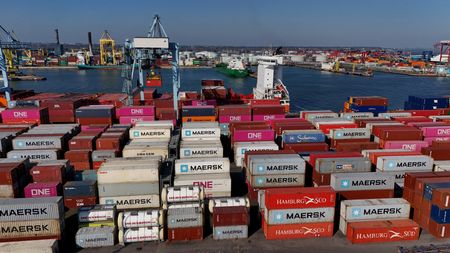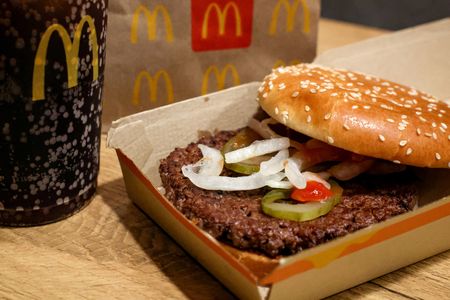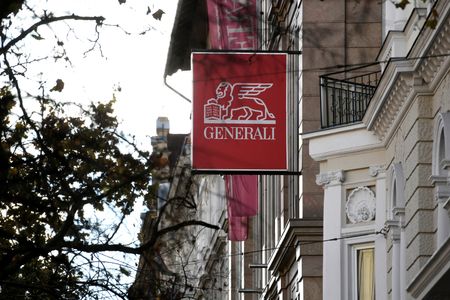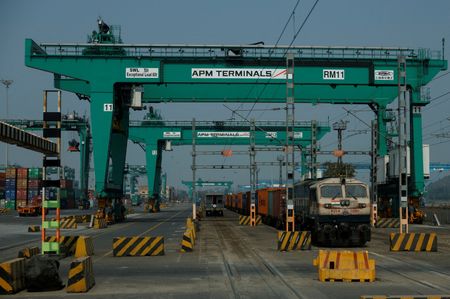By Alun John and Lucy Raitano
LONDON (Reuters) – Shares of surprise tariff avoiders like pharmaceuticals and drinks firms and rate-sensitive stocks such as real estate were among the few to post gains in Europe on Thursday, as fears of a global recession sent wider markets tumbling.
The broad STOXX 600 dropped to its lowest in two months and was last down 1.2%, but U.S. index futures fell more, around 3%, as President Donald Trump’s drastic trade tariffs sent investors out of stocks into the safety of bonds and gold. [MKTS/GLOB]
The euro itself roared higher, heading for its biggest one-day rise in almost a decade, up over 2.5% at one point at $1.1147, as investors dumped dollars.
Among the gloom in the stocks world, surprise bright spots appeared, particularly in those sectors where investors had been bracing for high tariffs, but did not see their worst fears materialise.
European spirit makers were expected to see large tariffs after a social media post from Trump last month suggesting as much. After they avoided any particularly special harsh treatment, however, shares rose on Wednesday.
Diageo and Davide Campari were up over 2%, rebounding after recent tumbles.
“The scale of tariffs for spirits stocks is less than feared,” Citi analysts said, adding that markets had anticipated around 25% tariffs on the sector.
Pharmaceuticals also posted gains. British drugmakers GSK and AstraZeneca each rose over 1% after Trump spared pharmaceutical products from wide-ranging reciprocal tariffs.
GlaxoSmithKline has an estimated 52% revenue exposure to the U.S. and AstraZeneca 40%.
To be sure, analysts say neither pharma nor spirit makers are out of the woods yet, with potential for future additional tariff announcements as well as the impact of the overall hit to growth from tariffs, but the reprieve would help shares in the short term.
Other rare gainers in Europe were traditional defensive sectors, such as real estate up 2.2%, set for their biggest daily percentage gain since mid January.
Real estate stocks are sensitive to interest rates, and the rush to the safety of government bonds pushed Germany’s 10-year bond yield down 7 basis points to its lowest in a month. [GVD/EUR]
The second best sectoral performer in Europe was utilities, up 1.75% at their highest since 2008, benefiting from a flight to safety effect since they rely little on either imports or exports.
(Reporting by Alun John and Lucy Raitano; Editing by Amanda Cooper and Ed Osmond)










